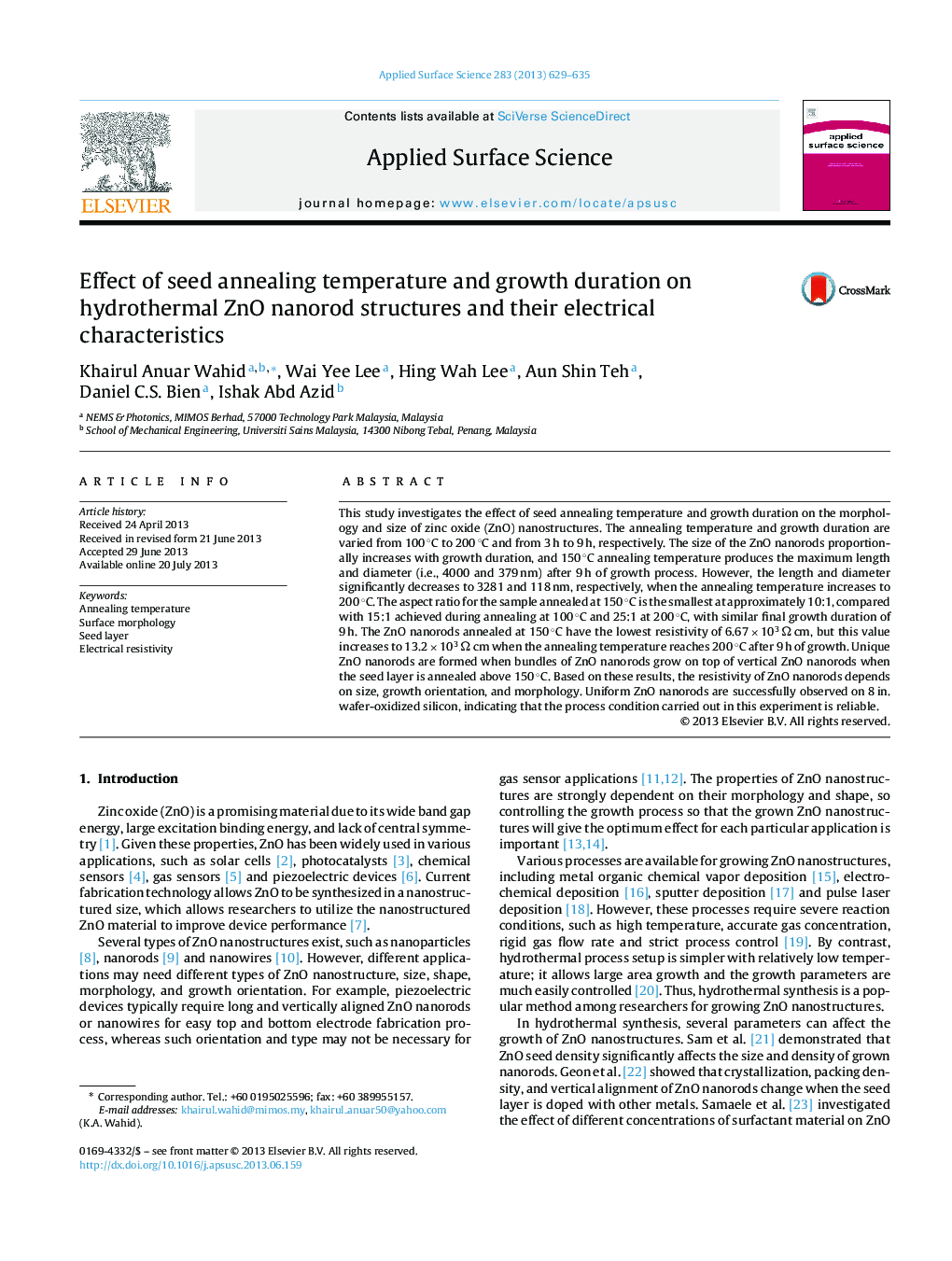| Article ID | Journal | Published Year | Pages | File Type |
|---|---|---|---|---|
| 5353955 | Applied Surface Science | 2013 | 7 Pages |
â¢Investigate the effect of seeds annealing temperature and growth duration on ZnO nanorods structures.â¢The annealing temperature will affect the ZnO morphology and orientation while growth duration will affect the ZnO size.â¢At anneal temperature above 170 °C, a unique ZnO morphology is growth. The growth mechanism is explained.â¢Investigate the electrical resistivity on grown ZnO nanorods.â¢Observe the effect of size, surface morphology and growth orientation of ZnO nanorods on electrical resistivity.
This study investigates the effect of seed annealing temperature and growth duration on the morphology and size of zinc oxide (ZnO) nanostructures. The annealing temperature and growth duration are varied from 100 °C to 200 °C and from 3 h to 9 h, respectively. The size of the ZnO nanorods proportionally increases with growth duration, and 150 °C annealing temperature produces the maximum length and diameter (i.e., 4000 and 379 nm) after 9 h of growth process. However, the length and diameter significantly decreases to 3281 and 118 nm, respectively, when the annealing temperature increases to 200 °C. The aspect ratio for the sample annealed at 150 °C is the smallest at approximately 10:1, compared with 15:1 achieved during annealing at 100 °C and 25:1 at 200 °C, with similar final growth duration of 9 h. The ZnO nanorods annealed at 150 °C have the lowest resistivity of 6.67 Ã 103 Ω cm, but this value increases to 13.2 Ã 103 Ω cm when the annealing temperature reaches 200 °C after 9 h of growth. Unique ZnO nanorods are formed when bundles of ZnO nanorods grow on top of vertical ZnO nanorods when the seed layer is annealed above 150 °C. Based on these results, the resistivity of ZnO nanorods depends on size, growth orientation, and morphology. Uniform ZnO nanorods are successfully observed on 8 in. wafer-oxidized silicon, indicating that the process condition carried out in this experiment is reliable.
